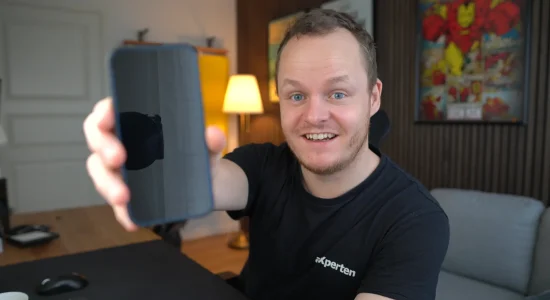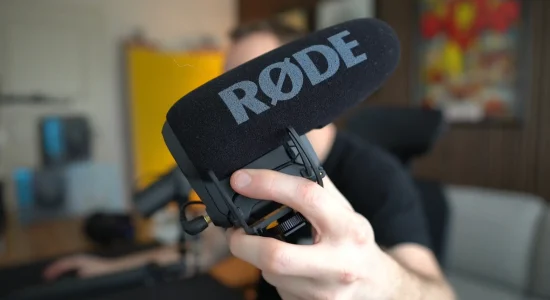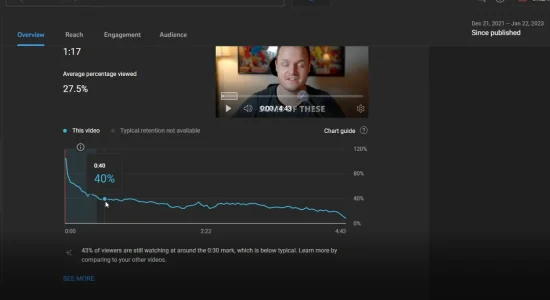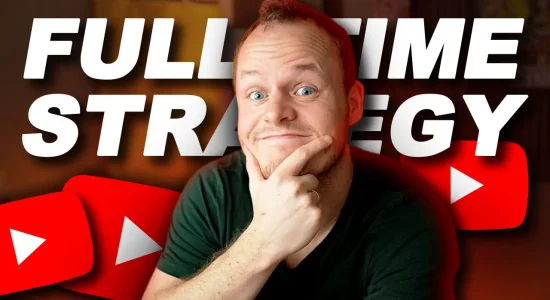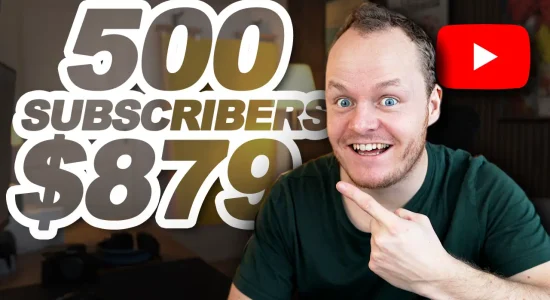With the abundance of social media platforms out there, content creators are today spoiled for choice. However, the wide range of platforms available can also lead to confusion regarding the best way to monetize content. For instance, which would be more profitable: using a streaming service like Twitch or hosting your videos on YouTube?
YouTube videos are more profitable than streaming platforms like Twitch at scale. It is hard to start making money on YouTube, but the platform can be very profitable once you do. Conversely, it is might be easier to make small amounts of money on Twitch but harder to scale up.
In this article, I’ll explain how the two platforms allow you to monetize content and why YouTube is the more profitable platform at scale.
Making Money on a Streaming Platform Like Twitch
Like YouTube, Twitch is a social media platform dedicated to video content. Although it is most popular among a younger demographic of gamers, the network also hosts reviews, events, talk shows, and other live broadcasts.
Effective ways of making money on Twitch include:
- Paid subscriptions
- Donations
- Affiliate Programs
- Merchandising
- Advertising
- Recorded streams
Let me explain how each of these approaches can generate revenue for your content.
Paid subscriptions
The most obvious way to monetize your content is to offer a paid subscription. While streaming services like Twitch allow streamers to set their own rates for subscriptions, they also take 50% of these as fees for hosting your content on their platform.
Remember that Twitch is a free service for users, and many of them may not be willing to pay for all but the most popular streams or for a select few of their favorite streamers. To attract users, you might have to initially keep your subscription fee on the lower end. This is why most subscriptions tend to be in the $2-5 range.
Stream creators may also need to offer special services or advanced functionality to their subscribers as a further enticement to subscribe to their channel. Common perks that streamers offer to only their subscribers include:
- Access to Higher video quality
- Exclusive content
- Ad-free streams
- Access to restricted chat rooms
- Exclusive use of digital assets like emojis and greater profile customization
- Shoutouts and direct interaction with creators
To increase their subscriber count, streamers can also give subscriptions as gifts to their viewers. They may draw randomized lots for this or offer subscriptions to specific users as a prize.
Fans of ancreator may also offer subscription gifts to new or prospective viewers. By gifting subscriptions, fans can help their favorite creators draw a larger viewership and expand their operations.
Donations
Another way content creators can monetize their streams is by tapping into donations from viewers. They can solicit donations from viewers by leaving options for them to make online payments. They can also explicitly state the amount they are looking to raise and mention how they intend to use the money.
A unique way viewers can pay content creators on Twitch is by using a digital currency known as Bits (10,000 bits = $126). Note that Twitch will deduct 29% of donations made using bits as a fee for facilitating the transaction.
Viewers may leave donations for content creators as a mark of appreciation for their work, to get a chance to interact with them, or as part of building relations within online communities.
Affiliate Programs
Affiliate programs allow content creators to make money from sellers of goods and services by placing links to their products or services in their videos. Every time a user clicks through to the third-party site and makes a purchase, the content creator receives a small fee for facilitating the transaction.
For instance, a reviewer of camera gear may place links in their video that lead prospective buyers among their viewers to a camera manufacturer’s site. Here, the viewer can purchase the equipment they are interested in. In return, the content creator will receive a small fee from the manufacturer for linking them to the buyer.
Most sellers who use affiliate marketing usually have ongoing relationships with many such content producers. They may require users to enter a code at check out to maintain a record of how they have arrived at their site. This code will be shared with them by the content creator through their videos.
Note that content creators usually need to reach a certain scale before they attract the attention of marketers, and it may not be easy to make money this way from the get-go.
On the flip side, the largest content creators may attract so much traffic that sellers enable them to pass on benefits to their viewers. Such benefits may come in the form of special discounts, further driving up the purchases via the content creators channel and driving up the fees they generate through the affiliate program.
Twitch’s affiliate program is a little easier to qualify for than YouTube’s, making it easier for content creators who are just starting out to make money on Twitch as opposed to YouTube.
To qualify for the affiliate marketing program, a channel needs a minimum of:
- 50 subscribers and 3 unique viewers per stream.
- 500 minutes of content and 7 active days over the last 30 days.
Merchandising
Streamers can also sell their own merchandise to their viewers, such as memorabilia, custom t-shirts, mugs, or other products. Of course, manufacturing these items will involve additional costs for the content creator.
Once again, this approach is also likely to be most effective for already popular content creators who have a fan base, which justifies the effort and expense taken to produce the products they sell.
Advertising
Once a streamer achieves a degree of popularity, advertising is the most lucrative way to raise money from their content. They can place links to individual sellers as banners on their page or advertise their products or services in their streams.
The rates paid will depend on the specific streaming platform used. In the case of Twitch, content creators are paid $0.25 – $1.50 per 1,000 views. While this may not seem like much, the most popular streams rack up viewership figures in the hundreds of thousands, making advertising a profitable endeavour.
However, since today most of the platform’s viewers use ad blockers to avoid banner ads on websites, banner advertising is no longer very profitable.
Advertising within content is harder for a viewer to remove, but too much advertising can also break the momentum of your video stream. Taken too far, advertising can cause viewership to drop, making it harder to generate revenue in future.
Recorded Streams
Although streaming platforms are generally tailored to streaming as opposed to hosting videos, they are increasingly offering features that compete with video hosting sites like YouTube. A streamer can make additional income by recording their broadcasts and hosting their video on their channel.
If the platform they use does not support recorded videos, they can use alternative platforms such as YouTube for this purpose. This way, they can overcome the main drawback that streamers have vis-a-vis video hosters.
However, streams are generally different from well-crafted videos. Only the most popular streams will generate a comparable amount of revenue to your standard YouTube video.
Monetizing Videos on YouTube
Most of the approaches for monetizing content are the same for YouTube videos as they are for streaming services like Twitch.
As a content creator, you can make money on YouTube through the following means:
- Advertising
- Subscriptions
- Partnership programs
- Merchandising
- Donations
Let’s look at these approaches in greater detail before we wrap up our comparison of ways to make money via streaming and hosting videos on YouTube.
Read also this: YouTube Gaming Channel Description Template
Advertising
Advertising is the primary way to make money via videos on YouTube.
As in the affiliate marketing method described earlier, the most common way to do this is for content creators who specialize in specific content to recommend products and services related to the content they produce. However, here, the content creator will be paid for airing the advertisement regardless of the outcome.
Again, this usually requires that content creators reach a certain scale and popularity. Therefore, advertising may not be a viable option for smaller creators or those just starting out.
Moreover, remember that advertisers go to these content producers to tap into their credibility and user base. Since advertising faulty products and fraudulent services erodes a content creator’s credibility, it is not recommended that you try to make money from advertising inferior products or services.
Instead, content creators should directly approach brands that align with their values. This gives them the best opportunity to grow their viewerships and their incomes.
Apart from this, YouTube may also place advertisements at some point in your video from sellers who have placed orders with Google. These ads are played using Google Adsense algorithms, which place ads based on the profiles of individual viewers.
In the case of such contextual ads, a significant portion of the advertising revenue goes to Google.
Notably, it is much harder to qualify for YouTube’s affiliate marketing program than Twitch’s. To qualify for the YouTube affiliate program, a channel or content creator must show a minimum of:
- 1,000 subscribers.
- 4,000 viewer hours over the past year.
- 100% original content that is free of copyright violation.
As these conditions are noticeably more challenging than Twitch’s, it can be harder for content creators who are just starting out or have limited resources to start making money on YouTube from the get-go.
Subscriptions
YouTube has a subscription program through which viewers can directly contribute funds to their favorite content creators. Viewers who wish to offer support with more limited means can also pay for “Super Chats” and “Super Stickers.”
A Super Chats is a pinned chat that gives both the chat itself–and the viewer who paid for it–greater prominence in YouTube’s comments browser. Similarly, a Super Sticker is an animated emoji that viewers can purchase to use in their chats, giving them greater visibility in the chat window.
Partnership Programs
Large content producing companies may partner with up-and-coming content creators, offering them financial, material, and creative inputs to grow their brands. They may even help pair content producers with appropriate brands and help them get started with advertising on YouTube.
In return, they may expect a return on the content producer’s advertising revenue, the portion left over after Google has deducted its share. Usually, these terms will be laid out clearly in an agreement at the onset of the relationship. While the content producers will lose some share of their revenue, they will also get an early boost in their online careers.
Merchandising
Like streamers, content creators on YouTube can also sell merchandise to their viewers. Of course, manufacturing these products will involve additional costs for the content creator. However, if the demand for these items is substantial enough, there’s a high chance of profitability.
Donations
YouTube content creators can also collect money from their viewers as donations. They may state a goal for the amount they are trying to collect or indicate an intended use for the funds. They must also share information on how viewers who wish to contribute to their funds can make a payment over the internet.
Streaming vs. YouTube Comparison
YouTube and streaming platforms, like Twitch, are similar but slightly differentiated models for creators to share and profit from their video content.
There are several ways to monetize content on both platforms, and each has its own advantages and disadvantages. So, it can be confusing to discern which is the more profitable platform from the point of view of a content creators.
One way to differentiate the revenue models of YouTube and Twitch is to compare the qualifications for generating advertising revenue on the two platforms. The table below lists these differences.
| Subscribers Required | Qualifying Viewership Figures | |
| YouTube | 1,000 | 4,000 viewer hours in 12 months |
| Twitch | 50 | 500 mins over 7+ days in 30 days. Average 3 concurrent viewers for 30 days (the hardest part) |
Clearly, it is much easier to start making money on Twitch than it is on YouTube. A creator can reasonably expect to start making a limited income within the first few months of being on Twitch, whereas it can take years before you see any revenue from YouTube.
However, YouTube is a far larger platform with greater resources and reach. For the few content creators who do hit a certain scale of success on the platform, YouTube can be extremely lucrative. In this case, it will clearly be the more profitable platform.
If you are a content creator, in all likelihood, you will want to be on multiple platforms. In this case, there is no need to choose between the two. At the same time, it is wise to keep an eye on the evolving scenario as this is a swiftly evolving field, and there is no telling what tomorrow will bring.
Conclusion
YouTube and streaming platforms such as Twitch have their own pros and cons. While it is easier to start making money on a streaming platform such as Twitch than it is on YouTube, YouTube’s greater reach and resources make it more profitable for the few who make it big on the platform.


